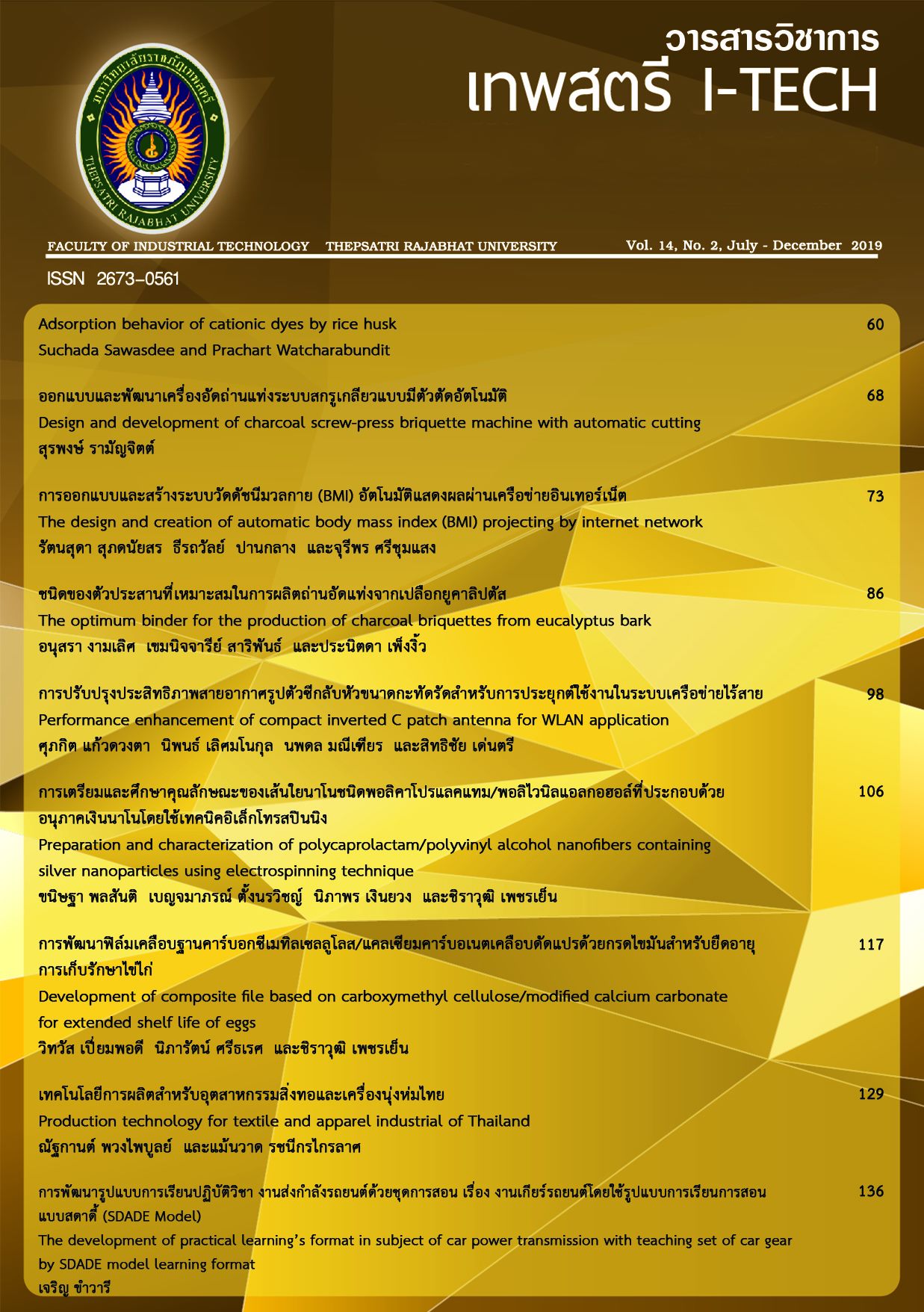Adsorption behavior of cationic dyes by rice husk
Abstract
The dye wastewater in textile industries is the major source of environmental pollution. It has a direct impact on the lives of humans and aquatic animals. Discharged dye wastewater contains mineral salts and dyes at high concentration. Low cost by-products from agricultural waste have been studied for wastewater treatment. In this work, rice husk was applied as an adsorbent for the cationic dyes (brilliant green and rhodamine B) removal in the batch adsorption process. The effect of contact time (1-360 min) and adsorbent dose (0.25-1.25 g) were evaluated at 30°C. The adsorbent was characterized by Fourier transform infrared spectroscopy (FTIR). The experimental data were analyzed using isotherm and kinetic models. The equilibrium adsorption data were fitted to the Langmuir isotherm and the maximum adsorption capacity was 8.93 mg/g for brilliant green and 5.12 mg/g for rhodamine B. The adsorption kinetic data were best described by the pseudo-second order model and intra-particle diffusion. The results revealed that the rice husk was an effective adsorbent for brilliant green and rhodamine B removal in aqueous solution.

